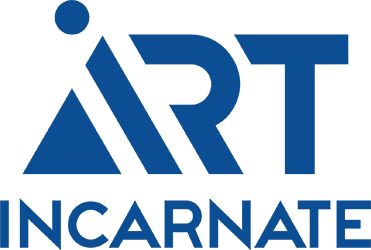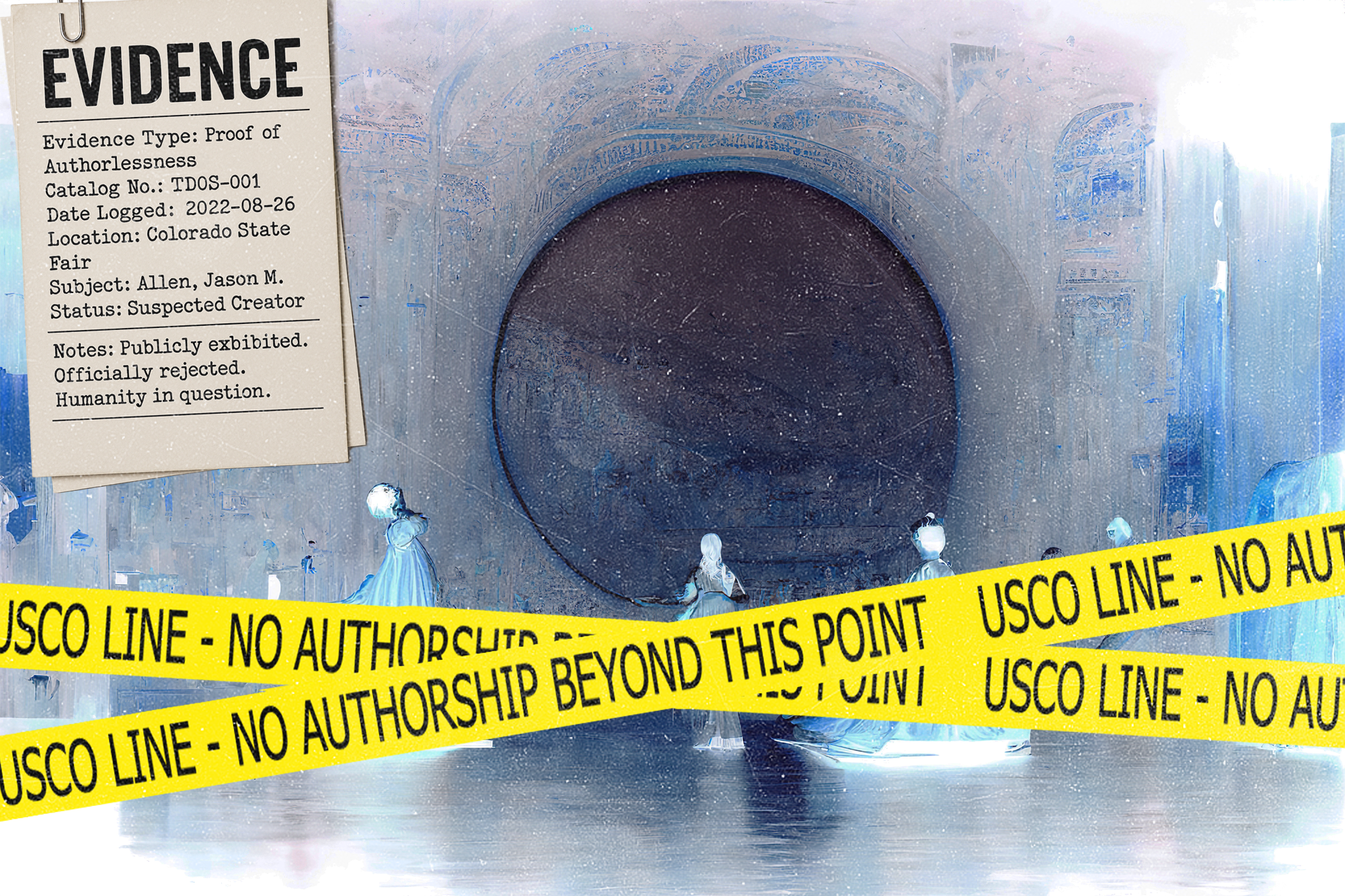My conscious choices mean something.
I am responsible for my own actions. Nobody tells me what to think, what tools I’m allowed to use, or how to create art.
Of course, we can talk about influences and being a product of society, but without getting too philosophical, it is reasonable to assume I remain my own person with agency, capable of and possessing the right to express myself however I choose, especially artistically.
If I cannot take ownership or control over the results of my conscious choices, the most pertinent question to ask immediately is: Who is denying me this right?
That is actually worse than indentured servitude, where in that case at least one’s actions are owned by their controllers. If my conscious efforts are neither mine to own nor attribute, then my actions are effectively meaningless. Macbeth described it best:
Outside of AI Art Copyright, what other situation exists where a person is told that their intentional actions, expression, and outcomes are meaningless, de minimis, signifying nothing?
“…a tale told by an idiot, full of sound and fury, signifying nothing.”
Well, that is exactly what the U.S. Copyright Office (USCO) has done to me as a digital creator, the moment I chose to use generative A.I. to assist in creating art. By denying my authorship, they have rendered my conscious efforts void. It is not merely a denial of rights—it’s a denial of existence. This is why I’m suing them.
But the implications of the Copyright Office’s actions run even deeper. They don’t just deny my rights as a creator—they call into question the very nature of human agency and responsibility in art and technology.
The Absurdity of the USCO’s AI Art Copyright Logic.
The USCO uses the term “appreciable A.I. material” as though that were equivalent with authorlessness like a foregone established fact, but this logic is borrowed from contexts where it makes sense only to describe pre-existing unclaimable material. By applying it here, the USCO presumes A.I. generated material as either not having a human author, or existing outside human control, without providing any evidence. This is not just illogical—it’s dangerous.
If this logic were applied elsewhere, the world would fall apart. Let’s make an exhaustive list of examples where human agency is recognized, credited, and respected, no matter how much tools, chance, or external factors are involved:
- A Gambler is credited for their choices—when to bet, where to bet, and how much to bet—and owns the winnings. We don’t call it “appreciable probability material.”
- A Miner is credited for their effort in extracting valuable resources, like gold or diamonds, and owns the treasure they unearth. We don’t call it “appreciable quarry material.”
- An Investor is credited for their financial decisions and owns the returns they earn from stocks or crypto. We don’t call it “appreciable market material.”
- A Farmer is credited for cultivating crops, taking ownership of the produce they grow. We don’t call it “appreciable agricultural material.”
- A Driver is credited for moving a vehicle from one location to another. We don’t call it “appreciable vehicular material.”
- An Excavator, like my Dad, is credited for digging basements, clearing lots, or carving roads with heavy machinery. We don’t call it “appreciable heavy equipment material.”
- A Welder is credited for constructing structural frameworks. We don’t call it “appreciable metalworking material.”
- A Doctor is credited for saving lives and performing surgeries. We don’t call it “appreciable medical material.”
- A Lawyer is credited for crafting arguments and winning cases. We don’t call it “appreciable legal material.”
- A Magician is credited for their illusions and performances. We don’t call it “appreciable sleight-of-hand material.”
- An Engineer is credited for designing and constructing skyscrapers, bridges, and roads. We don’t call it “appreciable structural material.”
- An Arborist is credited for the reforestation efforts they oversee. We don’t call it “appreciable forestry material.”
- A Real Estate Builder is credited for developing homes and office buildings. We don’t call it “appreciable construction material.”
This absurd list could go on forever, each individual is given credit and ownership for the results of their labor, aided by tools or otherwise. Why, then, is a digital creator using A.I. art tools treated differently when it comes to AI Art Copyright?
Even more absurdly, let’s consider creative professions:
- A Programmer is credited for the code they write, the apps they build, and the systems they design. We don’t call it “appreciable compiler material.”
- An Author is credited for the words they write and the stories they tell. We don’t call it “appreciable language material.”
- A Sculptor is credited for the statues they carve. We don’t call it “appreciable stone material.”
- An Artist, like Leonardo da Vinci, is credited for their paintings, regardless of whether assistants contributed to the work. We don’t call it “appreciable paint brush material” or “appreciable art assistant material.”
And yet, when it comes to creating art with A.I. tools—art directed, refined, and ultimately authored by a human—are we being told there is no author? Suddenly, there is “no human involved,” and authorship is unthinkable, like the folks at the USCO “just can’t figure it out” and it is labeled “appreciable A.I. material.”
What a joke! This logic is circular and cowardly. Saying something is “A.I. generated” doesn’t make it authorless. It’s just an empty label—backed by no evidence, no logic, and no courage…
…Labeling it this as though it were a foregone conclusion, just “saying” it is appreciable, or too much, “A.I. generated material” like that is supposed to mean something. What is that supposed to mean, actually? Oh, it means there is no human authorship, so no AI Art Copyright. LOL. Based on what, exactly? Tell me, I’ll wait. Right, it’s based on a belief and a “because that’s what we think” and an “I said so” mentality, there are no conclusions that can be drawn to say A.I. generated material is flat out authorless. Prove it!
Believe me, I’ve read all the Copyright Office’s denials and guidance related to AI Art Copyright, trying to save face with small concessions, but to this day they still have never offered a single, evidence based, logical reason that they can state as a fact that A.I. generated art is of non-human orgin. Non… human… origin?
My Intentions Are Everything.
The USCO’s stance implies I am not a conscious creator, that my expression is accidental or meaningless; calling it de minimis (of little importance). But this could not be further from the truth. I intended to create something beautiful, purposeful, thought-provoking, and meaningful; to create something that literally came to me in my dreams. I succeeded, so much so that my work won a fine art competition judged by experts. This was no accident. “The A.I. tool” didn’t act under its own volition, and my process wasn’t random.

In fact, to get to the first finished version of Théâtre D’opéra Spatial, I made 624 creative decisions, each one entered as a prompt to refine and push the work forward. That means 624 deliberate, conscious decisions—624 moments where I chose to refine, reimagine, and push the work forward. Each prompt generated multiple variations, but every step of the way I was curating, selecting, and discarding, until I arrived at the work that spoke to me.
These 624 prompts have since taken on a life of their own, becoming something of a “mythic number” in my community. At an event in Boulder, the audience literally shouted the number back to me when it came up in discussion. Think about that: the public recognizes the persistence, the authorship, the conscious creative struggle that went into this. And yet, the USCO insists on calling all of that “authorless.” If that’s not absurd, what is?
Technology, like a hammer, can be used for good or bad—building or breaking. I used A.I. to expand my imagination, bring wonder into the world, and uplift others. By downplaying or denying my role, the USCO sends a dangerous message: that creators have no responsibility or credit for how they use technology. Worse, this discourages others from using advanced tools for beauty, innovation, and truth, while emboldening bad actors who exploit these tools with no concern for ethics or responsibility. Ever consider how much this negative stigma surrounding A.I. is altering our perspective on creativity and expression?
I didn’t open Pandora’s Box to a dystopian future. I opened a door to beauty, wonder, and human imagination. The dystopia is being carved not by A.I., but by the endless chorus of keyboard warriors and crybaby artists. Their petulant outrage is designed to scare people away from using it for beauty and good. So, what are we left with? Ironically, it is their resistance in the form of discouragement, threats, and outright lies, not the technology itself, that paves the road to the very dystopian future they claim to fear. That is not just misguided. It is self-defeating. Not smart.
The freedom to express myself is tied to the outcome of my intentions and actions. Denying that expression doesn’t just harm me—it harms society. It undermines innovation, stifles creativity, and casts a shadow over the future of art and technology.
A Call for Accountability
By refusing AI Art Copyright protections, the USCO fails to uphold its purpose: protecting creators and their works. It tramples on the freedom of expression, discourages responsible exploration, and undermines the societal role of art. This isn’t just a mistake, it’s an abdication of the USCO’s responsibility to serve creators and protect the best interests of the American people.
The USCO has published mountains of so-called ‘guidance’ (not laws, since they can’t make laws) stating that ‘AI-generated works are not protectable’ across pages and pages of mental gymnastics (see official guidance documents here).
If you want to see where they actually claimed my work “contains an appreciable amount of AI-generated material,” you can read the first refusal of AI art copyright. (Note: pretending like this is was pre-existing work is so obtuse it deserves its own blog post.)
The final refusal letter of AI Art Copyright—proudly published on the USCO’s own site as if it were a badge of honor—was their second attempt. Notice what’s missing? No mention of “appreciable AI material.” I wouldn’t use that language either if I wanted to look competent. Because once you put it in writing, it reveals just how weak their reasoning is.
The fight over AI art copyright is not just mine; it belongs to anyone who values their right to create, innovate, and express themselves. This is why I refuse to stand down. This is why I fight.
By denying AI Art Copyright outright, the USCO stifles progress and invites chaos. But I won’t be denied. I will continue to fight for the rights of conscious creators everywhere.
Art is the truest expression of human freedom. It’s time the Copyright Office stopped denying it.
Want to see what I’ve been building for the past two years as a way to protect my work? Discover Tradigital Luxe™. Explore here →



Pathetic excuse of a human being, stop stealing others hard work, ya grifter.
Pathetic excuse of a human being, stop stealing others hard work, ya grifter.